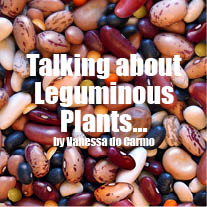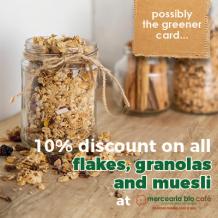Talking about Leguminous Plants ...

Did you know that…
... 2016 was declared by the United Nations General Assembly as the International Year of the Leguminous Plants?
... alternating the corn crop with that of a leguminous plant, the production of the cereal can result in an increase of about 25% ??
The leguminous plant crop "steals" nitrogen from the atmosphere, fixing it to the soil and taking advantage of only part of it for its growth, with the remainning being stored in the soil. As nitrogen is an important agricultural fertilizer, leguminous plant crops enrich the soils thus potentiating the crops for other plants.
... Is the leguminous plants production good for the environment?
In addition to nitrogen fixation in soils, by reducing their concentration in the atmosphere, leguminous plants crops emit significantly less carbon dioxide and require a significantly lower amount of water than animal breed.
The Leguminous Plants ...
.... are edible grains that exist inside plants / pods. They may be dried (eg peas, broad beans, corn, chickpeas, peas, beans, lentils and lupins) or oilseeds (eg peanuts, soybeans).
... are excellent suppliers of vegetable protein, complex carbohydrates (starch) and insoluble fibers, B vitamins and essential minerals, as well as antioxidant substances. They are low in fat (dry) and have no cholesterol.
... in spite of all the advantages they represent for health and the environment, the reality is that in Portugal their production and consumption are far below the recommended values. Both the Pyramid of the Mediterranean Diet and the Portuguese Food Wheel attribute to these foods a high importance in food, considering that their consumption should be weekly and daily respectively. Personally and professionally, they are for me a food of election, which must be included in our daily diet. I will not refer to the quantities because each person has individual characteristics, goals and needs.
... can be included in the diet from the age of 9-11 months, starting with beans, lentils, grain and peas (for richness in proteins and complex carbohydrates); (especially girls) and pregnant women (for their richness in proteins, complex carbohydrates, vitamins (folic acid) and minerals (calcium and iron), and an excellent alternative in elderly people (by their generalized richness).
... dried are dehydrated due to a drying process, so it is necessary to make a preliminary dipping before cooking. The ideal methodology is to wash leguminous plants in running water, followed by soaking in cold water, for about 8 hours. I do not advise the use of baking soda in the dipping process, because although it is effective to accelerate it, it results from the destruction of vitamin B1 - thiamine - and is a source of salt. And yes, I advise the use of the water from the dripping in the confection where possible, due to its richness in water soluble vitamins. Fresh leguminous plants need no soaking, and lentils only need washing before cooking.
... can be found on sale in various forms of presentation / conservation. In the dry ones, one should choose between those that have brighter colour, smooth and uniform size; in fresh ones, one should opt for bright colours without deterioration; in the frozen ones one should check that there are no ice crystals and to ensure that the time between buying and returning it to the freezer is minimal; in the canned ones, one should check the labels carefully, opting for those that have less preservatives and salt.
... can and should be consumed in combination with other foods that enhance them, such as whole grains (enhancing protein value) and foods rich in vitamin C (eg citrus fruits, optimizing the absorption of iron). Caffeine (eg tea and coffee) or tannins (eg wine) should not be consumed at the same time, as these associations interfere with the absorption of the iron present in the leguminous plants, reducing it.
... are accessible throughout the year and are extremely versatile as far as culinary alternatives are concerned, ranging from starters, soups, cold salads, hot dishes and even desserts.
... in some people can cause intestinal discomfort like abdominal distension and flatulence, not being "advised" for people with diseases or changes in this organ. This symptomatology is associated with its richness in insoluble fibers, which enter into fermentation in the intestine. As for me, they should not be eliminated from the diet !! Once again I emphasize their nutritional richness, bearing in mind that each person reacts to a food itemb in an individual and characteristic way, so one should simply adopt measures such as the decrease of the frequence taken, increase tge dripping,change the water every 1 or 2 hours, jot to make use of the water used to soak itand stra7ning the water from the canned leguminous plants.
Vanessa do Carmo

green card - flakes, granolas and muesli
For the Mercearia Bio Green Card hol...
Read article



